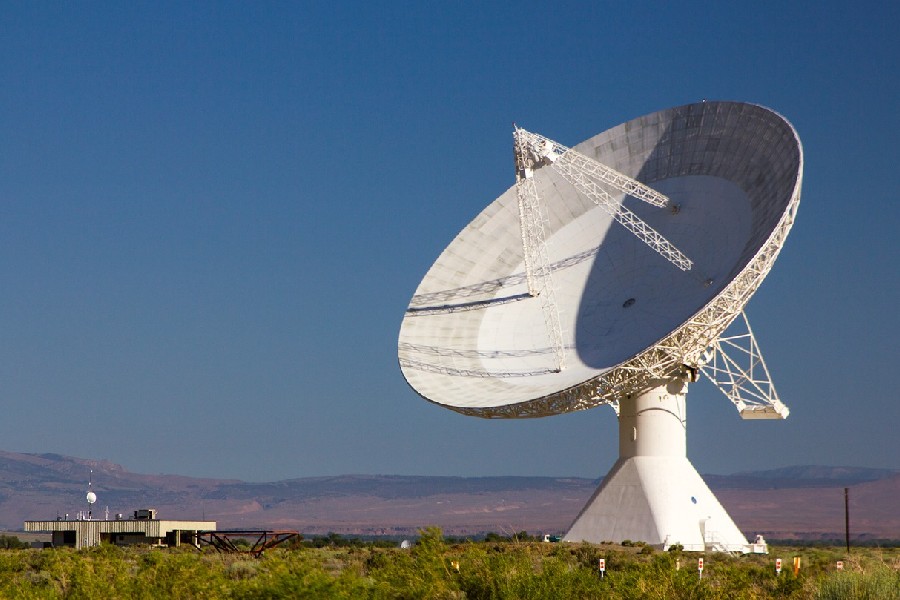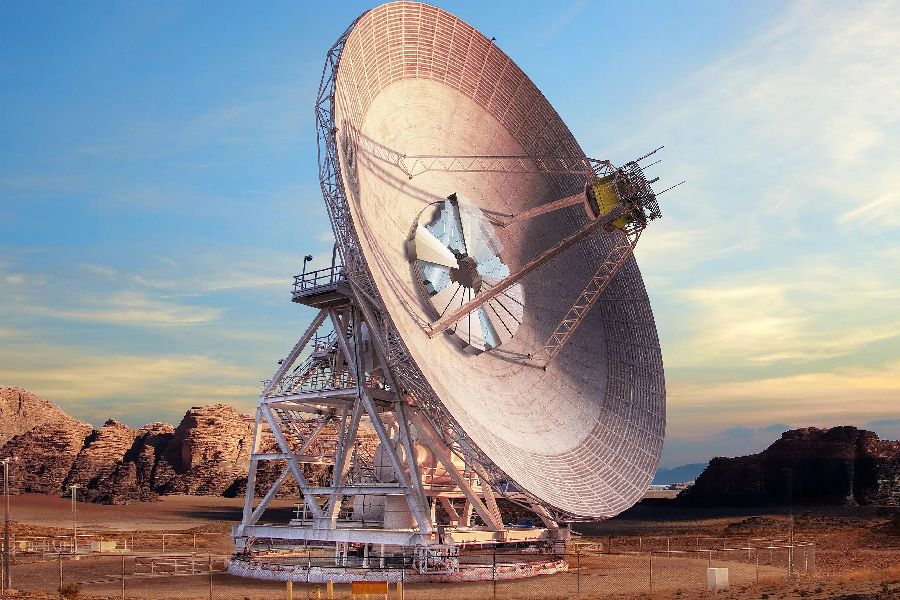Have you seen vivid images beamed back from the Hubble telescope and NASA rovers on Mars? It could make you wonder how the data traverses millions of miles from these spacecraft. Indeed, a globe-array network of massive radio antennas enables continuous communication with humanity’s farthest explorers. In understanding what the Deep Space Network is, we’ll explore this array of dish receivers.
We’ll also learn about the three strategic complexes spaced equally around the world to permit constant coverage as our planet rotates. Their premier capabilities support historic missions voyaging billions of miles.
These capabilities facilitate tracking spacecraft locations, collecting data sent back (telemetry), sending commands, and receiving images. Some famous missions relying on these capabilities are Voyagers 1 & 2, Cassini, and New Horizons.
Let’s uncover how the Deep Space Network’s high-tech antennas and monitoring teams maintain connections with wondrous robots across the solar system!

Deep Space Network
The Deep Space Network (DSN) is a global system of antennas and communication facilities that facilitates communication between spacecraft and Earth.
Operated by NASA’s Jet Propulsion Laboratory (JPL), the DSN is strategically positioned in three locations around the world: Goldstone, California; Madrid, Spain; and Canberra, Australia. These locations are approximately 120 degrees apart in longitude, ensuring continuous coverage as the Earth rotates.
The DSN plays a crucial role in supporting various space missions, including interplanetary probes, rovers, and deep space telescopes. By using large radio antennas, the DSN can send commands to spacecraft, receive scientific data, and track their locations in deep space.
This network allows for real-time communication and data transfer, facilitating the exploration and study of celestial bodies throughout our solar system and beyond.
History of the Deep Space Network
Early beginnings and establishment
The genesis of the Deep Space Network traces back to NASA’s Jet Propulsion Laboratory in the late 1950s, when the Space Race spurred swift advancements in rocketry and spacecraft dependent on rudimentary tracking networks.
The launch of Explorer 1 in 1958 – America’s first satellite – drove efforts to mature radio communications technology for guiding increasingly bold space missions.
As NASA eyed manned journeys deeper into the solar system, they confronted a daunting limitation– existing communication networks had restricted reach from Earth’s line of sight.
NASA urgently required innovative solutions for relaying signals with distant spacecraft, far exceeding conventional radio systems’ capabilities.
First dedicated antenna
Connections had to span millions, not mere thousands, of miles. This challenge spurred JPL engineers into action. They began designing a global “deep space instrumentation facility” specifically to support interplanetary exploration.
The first dedicated advanced space communications antenna was constructed in 1961. It was built near Johannesburg, South Africa. This inaugurated the steady development of a powerful, sophisticated tracking network soon dubbed NASA’s Deep Space Network that we recognize today.
Expansion of the DSN for Interplanetary Missions
Evolution to support interplanetary missions
As NASA accelerated programs for robotically surveying Mars and Venus by 1964, the status of the early Deep Space Network changed. It transitioned from a nice-to-have resource into an indispensable system enabling such pioneering interplanetary travels.
Beyond exponentially ramping up antenna construction and sensitive receivers, tracking stations were tripled. Tracking stations were tripled to form a strategic global triangle.
This lets the Deep Space Network operate continuously. The improved network became reliable infrastructure for regular data flows to and from spacecraft going farther into space.
Missions enabled
Crucial signals monitored by the expanded network allowed mapping of Mars’ potentially habitable regions during 1965’s Mariner 4 flyby while guiding orbital insertions and landings for over 15 subsequent Mars missions.
As Voyagers 1 and 2 completed historic Grand Tours through the gas giants in the 1980s, Deep Space Network upgrades were crucial. Combining arrays in three sites across the globe enabled high-resolution images from over 1 billion miles away.
These dramatic transmissions expanded our cosmic horizon beyond the solar system’s edge– sent by humanity’s farthest emissaries still operational today.
Technological Evolution within the DSN
The Deep Space Network has modernized as spacecraft go deeper and return more data. Switching from analog to digital communications enabled consolidation.
Ongoing upgrades convert aging microwave systems to cutting-edge optical laser communications. This promises order-of-magnitude leaps for transmitting massive future observation datasets.
Beyond capacity gains, closed-loop monitoring and machine learning algorithms improve signal quality. This proves critical given cosmic speed-of-light lags. Those lags prevent real-time human intervention for spacecraft light hours or days distant.
By continually advancing its technical backbone, the Deep Space Network sustains indispensable operations. It enables humanity’s ever-unfolding cosmic voyage into the great unknown.

Components of the Deep Space Network
Giant radio antennas
Signature giant radio antennas stand over 200 feet tall. These huge dishes are located at DSN complexes and serve as the network’s ultra-sensitive “big ears.” They collect faint signals from spacecraft billions of miles distant.
Their huge parabolic dishes precisely point towards target celestial coordinates. They act like acoustic mirrors to gather, focus, amplify, and register radio whispers across interplanetary voids.
High-gain antennas
Small high-gain antennas on spacecraft also help. They focus radio signals into tight beams aimed at Earth. This keeps the weakening signals strong over extremely long distances.
Amplifier “repeaters” are unsuitable over immense distances in space. Sharpening and focusing electromagnetic signals using high-gain dishes is vital for maintaining two-way communication links.
Portable radio tracking station (PRTS)
Transportable PRTS truck-mounted mobile antennas plug coverage gaps. They provide mission-critical redundancy at remote sites if needed.
PRTS units combine 12m dishes with operations rooms. These are for temporary receiving and transmitting roles. They augment the fixed infrastructure across the DSN. This showcases network agility and flexibility. The agility ensures our connection with space remains robust.
Purpose & Benefits of the Deep Space Network
Primary purpose of the DSN
The Deep Space Network’s overarching mission provides continuous communications linking Earth and robotic spacecraft throughout the solar system. No other infrastructure enables reliable sending and receiving of critical tracking, command, telemetry, and imaging data across unfathomable miles.
Role in space exploration
Interstellar observation
Sensitive antennas characterize asteroids, analyze Mars terrain, study Saturn’s rings, and more. They capture images like the Pillars of Creation and monitor spacecraft health, beaming insights from Voyager, Hubble, and other projects over 40 years.
Precision navigation
Precision navigation services leverage deep space atomic clock comparisons for guiding platforms to pinpoint Mars landings while favoring the safest trajectories skirting planetary dangers.
Future reconnaissance
As spacecraft reach farther into the outer solar system and beyond, Deep Space Network capabilities are expanding. This aims to facilitate future exploration of Jupiter’s ocean moon Europa and to enable the dispatching of probes well past Pluto.
Strategic Placement and Scientific Investigations
Strategic placement of DSN stations
The Deep Space Network has three communication complexes. These are located in California, Spain, and Australia. They are strategically positioned about 120 degrees apart in longitude around the globe.
Their careful spacing allows constant communication with spacecraft. As Earth rotates, monitoring duties are handed from one complex to the next daily. This happens without any coverage gaps.
Dry, radio-quiet locales shelter the giant antennas from interfering signals and inclement weather. Still, backup systems and extreme precautions maximize reliability, given humanity’s dependence on these sole conduits for deep space links.
Role in Scientific Investigations
Mars insights
In relaying imagery and sensor data throughout each Martian day via orbiters, DSN antennas enabled scientific confirmation of seasonal flows carving RSL streaks while tracking the Curiosity rover’s nail-biting descent to the surface.
Interstellar discoveries
The antennas received Hubble confirmation of supermassive blackholes shape-shifting galaxies, captured dwarf planet contender Ultima Thule’s first glimpse past Pluto, and transmitted awakening signs from NASA’s dormant IMAGE satellite in 2018 after over a decade of silence.
Conclusion
We hope peering behind the scenes of Deep Space Network has illuminated its profound impact. This invaluable system connects humanity with unexplored cosmic horizons.
As satellites and space probes travel exponentially farther out, their communication links with Earth must be sustained. Upgrading deep space antennas, radio equipment, and global networking coordination can maintain these vital conduits across vast distances for returning their scientific findings.
Just as launch requires escape velocity to overcome gravity, effective space communication relies on continued advancement of antennas, radio equipment, and networking capabilities over greater distances.
